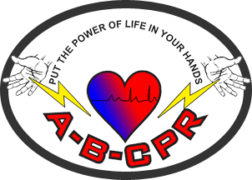Workplace safety is more than just meeting regulations—it’s a vital commitment to protecting lives, ensuring operational resilience, and fostering a culture of preparedness. In this guide, we’ll delve into workplace first aid certification, examining its significance, general requirements, and the transformative impact it can have on organizations.
The Critical Role of First Aid Certification in Modern Workplaces
First aid certification transcends regulatory requirements, embodying:
- Proactive Safety Measures: Equipping employees with life-saving skills.
- Life-Saving Potential: Swift responses to emergencies can mean the difference between life and death.
- Reduced Workplace Risks: Mitigating injury severity and promoting rapid recovery.
- Organizational Resilience: Enhancing the ability to handle crises effectively.
- Employee Confidence: Demonstrating a genuine commitment to their well-being.
The Economic Value of Workplace Safety
Investing in first aid training offers measurable financial benefits:
- Fewer Compensation Claims: Reducing incidents leads to lower workers’ compensation payouts.
- Lower Insurance Costs: Trained teams can reduce liability risks, impacting premiums positively.
- Minimized Productivity Losses: Quick interventions help employees recover faster.
- Safety-Driven Culture: Encouraging awareness and responsibility among all staff.
General Requirements for First Aid Certification
Workplace Safety Standards
While specific requirements vary by employer, industry, or location, most workplaces benefit from first aid programs that align with general safety standards, such as:
- Establishing a baseline for essential first aid skills.
- Ensuring access to adequate emergency supplies.
- Maintaining readiness through periodic training updates.
Industry-Specific Considerations
Each industry may prioritize certain first aid skills based on typical workplace risks. For example:
- Construction Sites: Trauma care, fall injury response, and environmental hazard management.
- Manufacturing: Burn care, chemical exposure treatment, and machinery-related injury response.
- Office Environments: Cardiac emergency preparedness, ergonomic injury care, and stress-related incident management.
- Retail and Hospitality: Crowd control, allergen responses, and customer health emergencies.
Employers often customize training to address the risks most relevant to their environment.
Core Skills Covered in First Aid Certification
Medical Assessment
- Conducting primary and secondary surveys.
- Recognizing life-threatening conditions.
- Evaluating patients systematically.
Emergency Interventions
- Administering CPR and using an AED.
- Treating wounds, burns, and fractures.
- Addressing choking incidents and other respiratory emergencies.
Specialized Scenarios
- Managing allergic reactions, diabetic emergencies, and strokes.
- Providing psychological first aid during mental health crises.
On-Site Group Training: A Convenient Option for Companies
For organizations looking to streamline first aid certification, on-site group training is an ideal solution. Hosting training sessions at your workplace ensures all employees receive consistent, industry-specific instruction without disrupting schedules.
Key Benefits of Group Training at Your Location
- Custom Tailored Content: Training programs designed to meet the unique needs of your industry.
- Cost-Effective: Reduce per-person costs with group rates.
- Convenience: Minimize downtime by bringing certified trainers directly to your facility.
- Team Cohesion: Promote a unified culture of safety and preparedness.
Explore how you can host a first aid certification class at your workplace with A-B-CPR. Their experienced instructors deliver top-notch training tailored to your team’s needs.
Navigating the Certification Process
What to Expect
Most first aid certification programs include:
- Flexible learning options such as online or in-person classes.
- Practical demonstrations to reinforce core skills.
- Assessments to validate knowledge and hands-on competency.
- Certifications that remain valid for 2-3 years, with renewal options available.
Continuous Learning and Renewal
- Regular refresher courses help employees maintain readiness.
- Advanced training options are available to expand on foundational skills.
How to Choose the Right First Aid Certification Program
When selecting a program, prioritize:
- Accreditation: Ensure the program is recognized by credible organizations such as OSHA, the American Heart Association, or equivalent authorities.
- Comprehensive Curriculum: Look for courses that cover key emergency response skills.
- Practical Application: Programs with hands-on elements improve confidence and readiness.
- Flexibility: Consider online, in-person, or hybrid training formats to suit your schedule.
- Customization: Seek industry-relevant courses to address specific workplace hazards.
- Affordability: Compare costs while ensuring the program meets your quality standards.
Conclusion
First aid certification is more than a compliance requirement—it’s an investment in human life and organizational resilience. By equipping employees with the knowledge to act swiftly and effectively during emergencies, businesses demonstrate a commitment to safety and preparedness.
Explore A-B-CPR’s group training options today and start building a safer, more prepared team.
Disclaimer: Certification requirements and workplace standards vary by industry and location. Always confirm specific requirements with your employer and local regulatory authorities.

